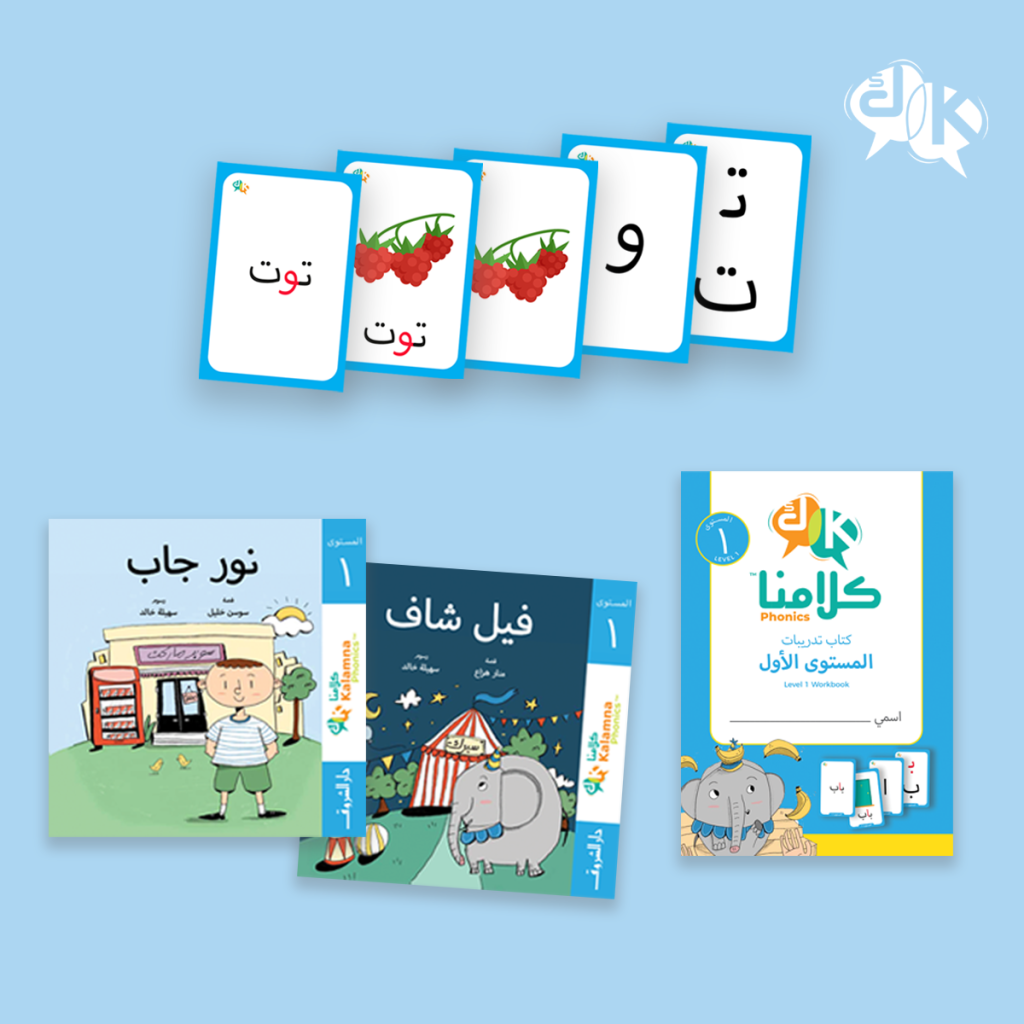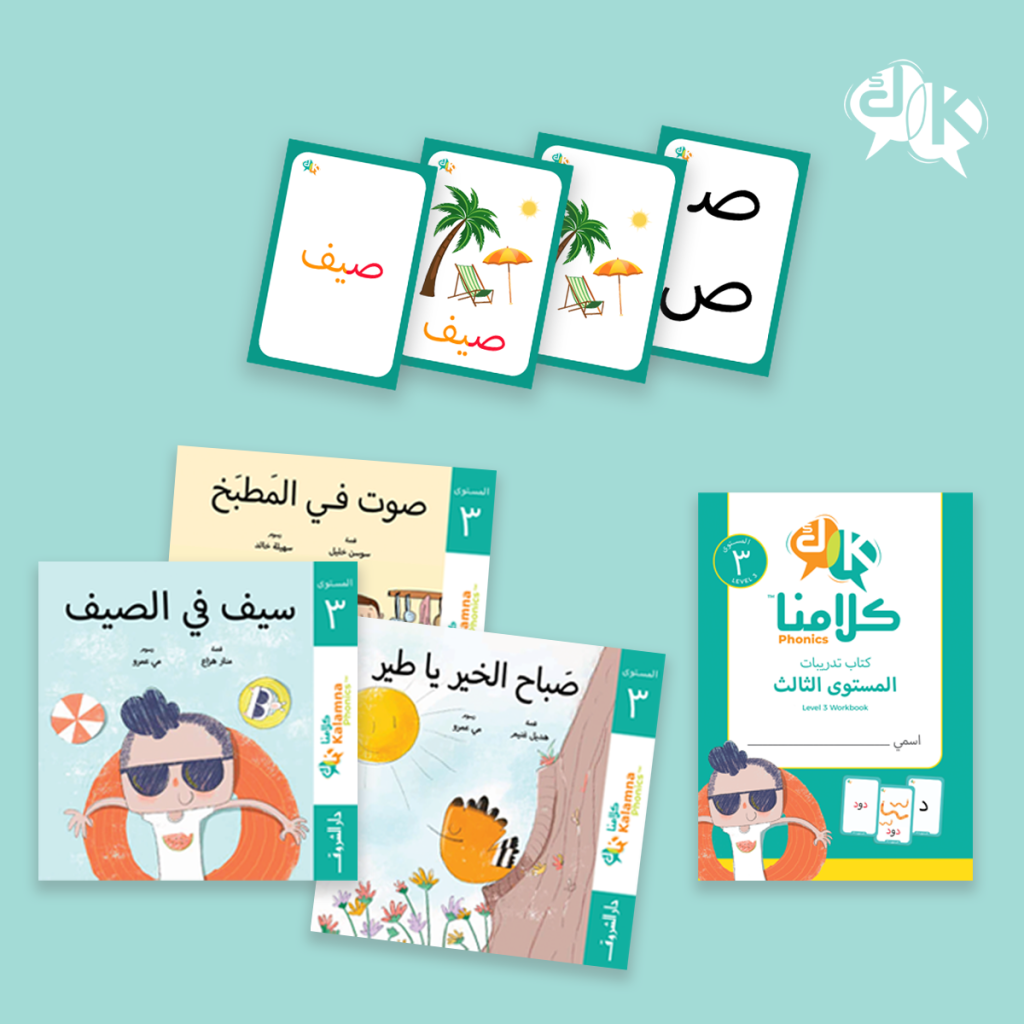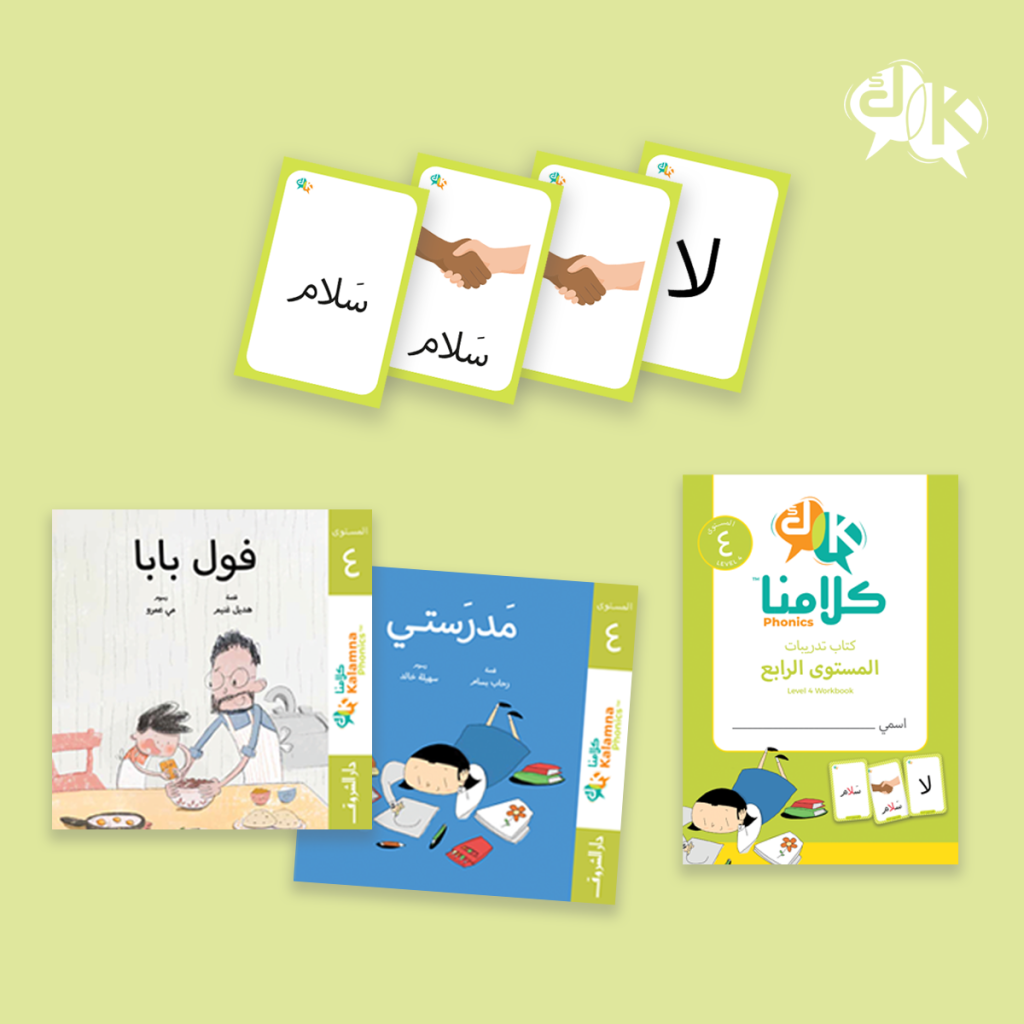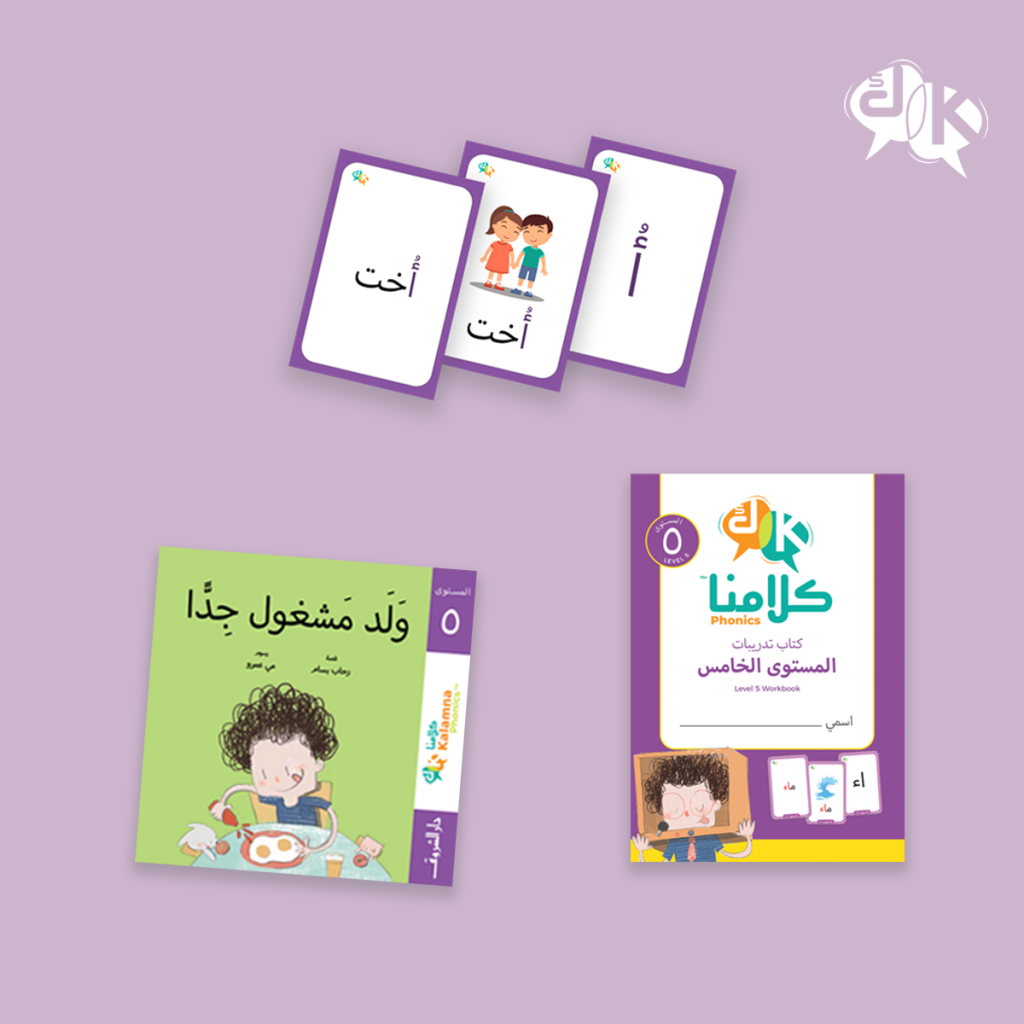A faster and easier way for learning to read Arabic!
The Kalamna Phonics™ programme is all students need to make a smooth transition from Arabic speakers to Arabic readers.
The Kalamna Phonics™ programme
The Kalamna Phonics™ programme is an educational resource that revolutionises the way through which Arabic is taught and learned. The first of its kind, the programme’s components (flashcards, levelled readers and workbooks) together form a comprehensive resource that supports the early stages of a child’s formal Arabic language learning journey.
Created by Saussan Khalil PhD, Senior Arabic Teacher at Cambridge University, the Kalamna Phonics™ toolkit is steeped in the latest academic research and sound pedagogy.
Having passed the test for being truly tried and tested, Kalamna received support from the Cambridge University Arts & Humanities Impact Fund to further develop the toolkit and reach more young Arabic language learners. Read more here.Watch video here.

The 5 levels of the Kalamna Phonics™ programme
Split over five levels, the programme gradually introduces learners to all the sounds and letters of the Arabic language using familiar language used in day-to-day life.

Level 1
Introduce, practice and learn to read and write 17 sounds all common between Standard and Spoken Arabic like ب ت ن ر

Level 2
Introduce, practice and learn to read and write short vowels and their diacritics (التشكيل)

Level 3
Introduce, practice and learn to read and write 5 more complex sounds still common between Standard and Spoken Arabic

Level 4
Introduce, practice and learn to read and write 4 sounds that differ between Standard and Spoken or are not part of the 28-letter alphabet like ق ة

Level 5
Introduce, practice and learn to read and write the 13 most complex sounds like ء ى اً
Kalamna Phonics™ User Guide
How to use the Kalamna Phonics™ flashcards
1 – Start with the pictures. Ask the child to name the object in the picture to make sure he knows the word for it.
2 – Present the sounds as a spoken sound and not with the name of the letter. For example, the letter “و” is presented as “wwww”, not “waw”.
3 – Introduce the words using the picture and word card, then ask the child to read it through blending the sounds for each letter in that word.
4 – To make sure that the child can read the word, present them with the flashcard with the word only.
5 – Repeat the steps to make sure he can read without a picture.
6 – At the end of each level, have the child practice writing the letters and then the words.
Note: the first level begins with sounds familiar to the child; the fifth level includes the hamza “ء” and the letters that are the most difficult to pronounce.
كيف تستخدم هذه البطاقات؟
1 – إبدأ بالصور. إسأل الطفل عمَّا في الصورة لتتأكد من معرفَته بما فيها.
2 – قدم الأصوات كصوت منطوق وليس باسم الحرف، فمثلاً حرف الواو نقول للطفل “ووو” ولا نقول “واو” وهكذا.
3 – قدم الكلمات باستخدام بطاقة الصورة/الكلمة مع نطق الكلمة، ثم اطلب من الطفل دمج الأصوات المطابقة لكل حرف.
4 – للتأكد من تمكن الطفل من قراءة الكلمة، قدم له بطاقة الكلمة بدون الصورة ليقرأها.
5 – كرر الخطوات للتأكد من قدرته على القراءة بدون الصورة.
6 – بعد الانتهاء من كل مستوى، درِّب الطفل على كتابة الحروف ثم الكلمات.
ملحوظة: المستوى الأول يبدأ بالأصوات المألوفة للطفل كما أن المستوى الخامس يشمل الهمزة وبعض الحروف الأصعب نطقاً.
How to use the Kalamna Phonics™ readers
1 – After the child has mastered each basic level using the flashcards, he is trained to read the appropriate book for each level.
2 – When reading the Kalamna readers, start by reading the title of the book and discussing the cover image.
3 – Before reading the story, review with the child the sounds that will be used, which are found in Table No. 1 in the book.
4 – Ask the child to combine the sounds and read the words in Table 2.
5 – Make sure the child understands the meanings of the words.
6 – After reading the book, ask the child to tell you the story using the pictures on pages 10 and 11.
كيف نستخدم كتب كالمنا؟
بعد اجادة الطفل لكل مستوى باستخدام البطاقات، يتدرب على قراءة الكتاب المناسب لكل مستوى.
عند قراءة كتب كالمنا نبدأ بقراءة عنوان الكتاب، ومناقشة صورة الغالف.
قبل قراءة القصة، راجع مع الطفل الأصوات التي سترد بها، والموجودة في الجدول رقم 1 في
الكتاب.
اطلب من الطفل دمج األصوات وقراءة الكلمات الموجودة في الجدول رقم 2.
تأكد من فهم الطفل لمعاني الكلمات.
بعد قراءة الكتاب إطلب من الطفل أن يحكي لك الحكاية باستخدام الصورفي صفحات 10 و 11.
Testimonials
“Thank you for a remarkable educational tool that works.
What I like most about Kalamna Phonics™ toolkit is that it unleashes the creativity and confidence of my students. They feel that Arabic is accessible and easy to learn. They try to read the Arabic signs I have in my class, and some of them even open our class library books and try to sound words beyond the Kalamna leveled books. They invent words and ask me if they are actual words, which some of them turn out to be real ones!”
Lobna Shokry
Children’s book author
Lango Northern Virginia Arabic instructor
أميرة أبو المجد
العضو المنتدب لدار الشروق
